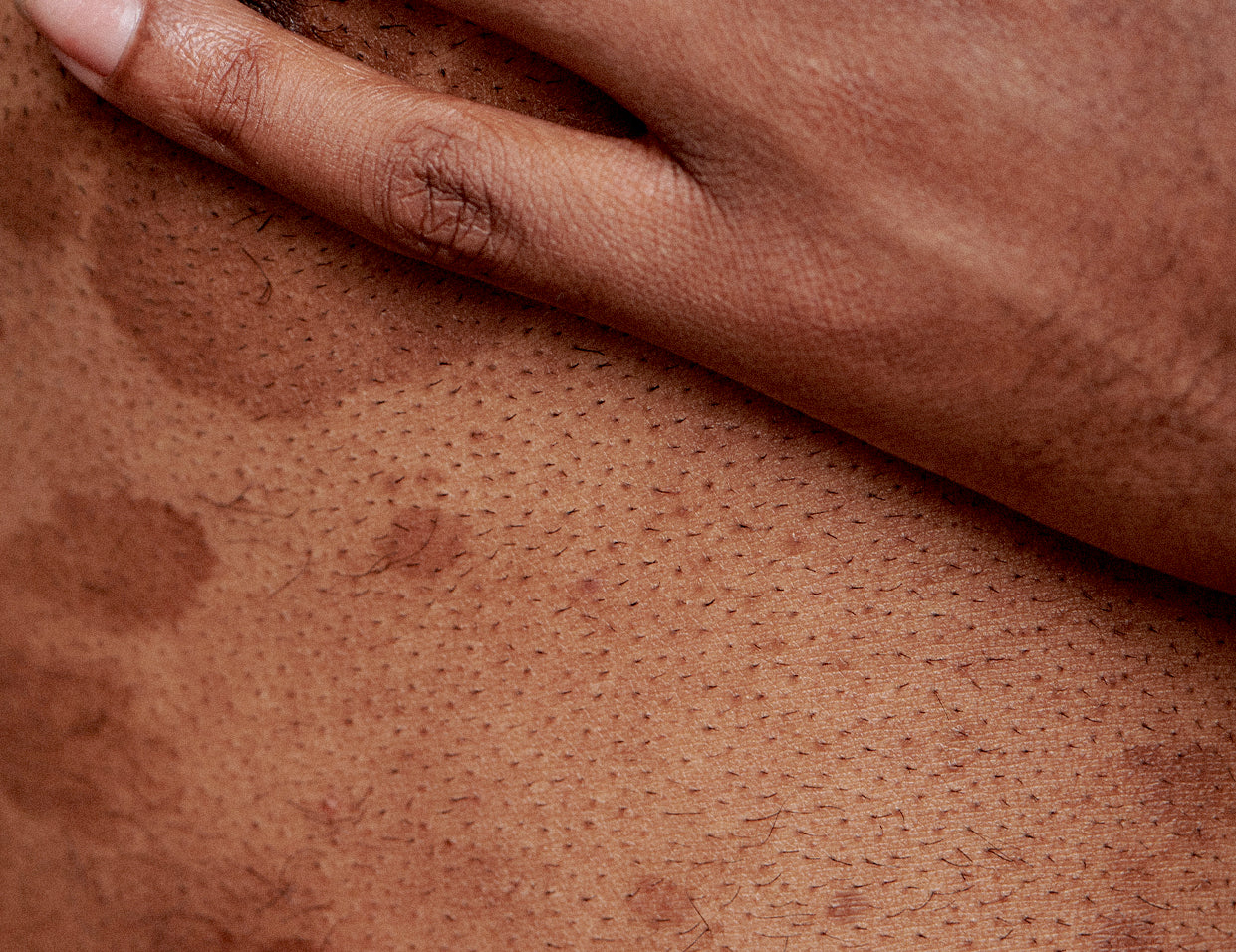As a dermatologist, I often encounter patients seeking advice on body hyperpigmentation in addition to facial concerns. Hyperpigmentation on the body, which presents as darkened areas like knees, elbows, and armpits, is a common occurrence, especially among individuals with darker skin tones. While it can be a normal physiologic process, it can also be triggered by various factors, making it a genuine concern for many individuals who seek effective treatments. In this comprehensive guide to treating hyperpigmentation on the body, my goal is to provide you with a thorough understanding of body hyperpigmentation, its underlying causes, and the available treatment options.
Understanding Hyperpigmentation on the Body:
Hyperpigmentation on the body can manifest as darkened areas, such as knees, elbows, armpits, and other skin folds. In many cases, this is a normal and physiologic occurrence, particularly in individuals with melanin-rich skin. However, it can also result from various causes, making treatment a common concern.
Causes of Hyperpigmentation:
-
Excess UV Damage: Sun exposure is a significant factor in causing hyperpigmentation on exposed body sites. Protecting your skin from harmful UV rays is crucial to preventing further pigmentation.
-
Post-Inflammatory Hyperpigmentation: Inflammatory insults to the skin, like acne blemishes, mosquito bites, or allergic reactions, can lead to melanin deposition in the affected areas.
-
Hormone Shifts: Hormonal changes during pregnancy or due to conditions like PCOS or diabetes can result in darkening of skin folds, nipples, and genitalia.
-
Friction and Thickening of Skin: Repeated rubbing or friction on the skin can cause thickening and darkening of the affected areas, especially in individuals with deeper skin tones.
What to Know About Treating Hyperpigmentation
Treating hyperpigmentation requires patience, as the skin takes anywhere between 30 to 60 days to renew itself fully. Expect improvements over a period of three to six months. Fall and winter are ideal times to treat hyperpigmentation, as there is reduced UV exposure, which can trigger pigmentation. Avoiding UV radiation during treatment is essential.
Top Skincare Ingredients for Fighting Hyperpigmentation:
In order to fight hyperpigmentation on the body, look for products with the following skincare ingredients:
-
Hydroquinone: Hydroquinone prevents pigmentation by inhibiting the activity of tyrosinase, the key enzyme involved in the conversion of the amino acid tyrosine into melanin (pigment).
-
Alpha arbutin: Similar to hydroquinone, alpha arbutin interferes with melanin formation by inhibiting the activity of tyrosinase, a key enzyme in melanin synthesis.
-
Licorice root extract: Licorice root extract contains glabridin, which reduces pigmentation by suppressing tyrosinase activity and decreasing melanin production.
-
Vitamin C: Vitamin C brightens skin and prevents pigmentation by inhibiting tyrosinase and reducing oxidative stress, a contributing factor to hyperpigmentation.
-
Retinoids (e.g., tretinoin and retinol): When applied topically, retinoids can increase the rate at which the skin cells in the epidermis turnover and shed, leading to a more even distribution of melanin and a reduction in the appearance of hyperpigmented areas.
-
Kojic acid: Kojic acid is thought to inhibit melanin synthesis by binding the copper ions necessary for tyrosinase activity.
-
Niacinamide: Niacinamide helps regulate melanin production by inhibiting the transfer of pigment from melanocytes (pigment-producing cells) to keratinocytes (skin cells). This can lead to a reduction in the appearance of hyperpigmentation, resulting in a more even skin tone.
-
Azelaic acid: Azelaic acid diminishes pigmentation by suppressing melanin synthesis and exfoliating skin cells.
-
Glycolic acid: Glycolic acid exfoliates the skin's surface, aiding in the shedding of pigmented cells and revealing fresher skin underneath.
Ways to Prevent Hyperpigmentation on the Body:
-
Sun Protection: Apply sunscreen daily and wear sun-protective clothing, especially if using exfoliating products that increase sun sensitivity.
-
Regular Moisturization: Keep your skin well-hydrated to support its health and barrier function. Use moisturizers with humectant (moisture-retaining) and exfoliating ingredients like urea and/or lactic acid for added benefits.
-
Limit Frictional Forces: Be mindful of repetitive rubbing or friction that can cause thickening and darkening of the skin. Consider using anti-chafe balms or hydrocolloid bandages for barrier protection.
-
Consider Laser Hair Removal: Reducing or eliminating shaving can limit friction on sensitive skin and prevent ingrown hairs and the subsequent hyperpigmentation.
Hyperpigmentation on the body can be a challenging concern, but with the right approach and patience, it can be effectively managed. Implementing a skincare routine with pigment-fighting ingredients, sun protection, and moisturization, as well as exploring any underlying causes to be addressed, can lead to significant improvements in your skin's appearance. Always consult with a dermatologist to tailor the best treatment plan to your specific needs.
DISCLAIMER: All skin care articles are intended to help educate on specific ingredients and skin care topics. Our articles are written to be informative and informational. Any reference to a specific patient experience is not a medical suggestion for treatment. Please note that any Prequel products with referenced ingredients are formulated for Cosmetic Use Only and NOT intended as replacements for physician advice and/or pharmaceutical product recommendations.




